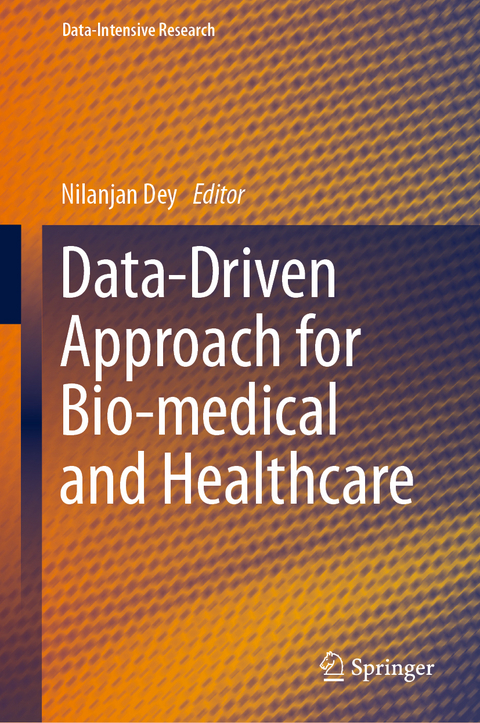
Data-Driven Approach for Bio-medical and Healthcare
Springer Verlag, Singapore
978-981-19-5183-1 (ISBN)
The book presents current research advances, both academic and industrial, in machine learning, artificial intelligence, and data analytics for biomedical and healthcare applications. The book deals with key challenges associated with biomedical data analysis including higher dimensions, class imbalances, smaller database sizes, etc. It also highlights development of novel pattern recognition and machine learning methods specific to medical and genomic data, which is extremely necessary but highly challenging. The book will be useful for healthcare professionals who have access to interesting data sources but lack the expertise to use data mining effectively.
Nilanjan Dey is an Associate Professor in the Department of Computer Science and Engineering, Techno International New Town, Kolkata, India. He is a visiting fellow of the University of Reading, UK. He also holds a position of Adjunct Professor at Ton Duc Thang University, Ho Chi Minh City, Vietnam. Previously, he held an honorary position of Visiting Scientist at Global Biomedical Technologies Inc., CA, USA (2012–2015). He was awarded his PhD from Jadavpur University in 2015. He is the Editor-in-Chief of the International Journal of Ambient Computing and Intelligence , IGI Global, USA. He is the Series Co-Editor of Springer Tracts in Nature-Inspired Computing (Springer Nature), Data-Intensive Research(Springer Nature), Advances in Ubiquitous Sensing Applications for Healthcare (Elsevier) etc. He is an associate editor of IET Image Processing and editorial board member of Complex & Intelligent Systems, Springer Nature, Applied Soft Computing, Elsevierand a Senior member of IEEE.
Chapter 1. Personal Health Record Data-Driven Integration of Heterogeneous Data.- Chapter 2. Privacy issues in data-driven healthcare.- Chapter 3. Personalizing the Patient Discharge Process and Follow Up Using Machine Learning Algorithms, Assessment Questionnaires and Ontology Reasoning.- Chapter 4. Explaining decisions of quantum algorithm: patient specific features explanation for epilepsy disease.- Chapter 5. Bioinformatics study for determination of the binding efficacy of heme-based protein.- Chapter 6. Growth Trend of Swine Flu and Covid 19 Pandemic A_ected Patients using Fuzzy Cellular Automata: A Study.- Chapter 7. Data-driven approach study for the prediction and detection of infectious disease outbreak.- Chapter 8. Design and development of interactive, real time dashboard to understand COVID-19 situation in Pune.- Chapter 9. Analyzing The Impact of Covid-19 and Vaccination using Machine Learning and ANN.- Chapter 10. Development of Psychiatric COVID-19 CHATBOT using Deep Learning.- Chapter 11. Adv nced Mathematical Model to Measure the Severity of any Pandemics.- Chapter 12. Semi-Structured Patient Data in Electronic Health Record.
| Erscheinungsdatum | 18.11.2022 |
|---|---|
| Reihe/Serie | Data-Intensive Research |
| Zusatzinfo | 81 Illustrations, color; 21 Illustrations, black and white; XIII, 233 p. 102 illus., 81 illus. in color. |
| Verlagsort | Singapore |
| Sprache | englisch |
| Maße | 155 x 235 mm |
| Themenwelt | Mathematik / Informatik ► Informatik ► Datenbanken |
| Mathematik / Informatik ► Informatik ► Netzwerke | |
| Informatik ► Theorie / Studium ► Künstliche Intelligenz / Robotik | |
| Mathematik / Informatik ► Mathematik | |
| Medizin / Pharmazie ► Gesundheitswesen | |
| Technik | |
| ISBN-10 | 981-19-5183-7 / 9811951837 |
| ISBN-13 | 978-981-19-5183-1 / 9789811951831 |
| Zustand | Neuware |
| Informationen gemäß Produktsicherheitsverordnung (GPSR) | |
| Haben Sie eine Frage zum Produkt? |
aus dem Bereich


